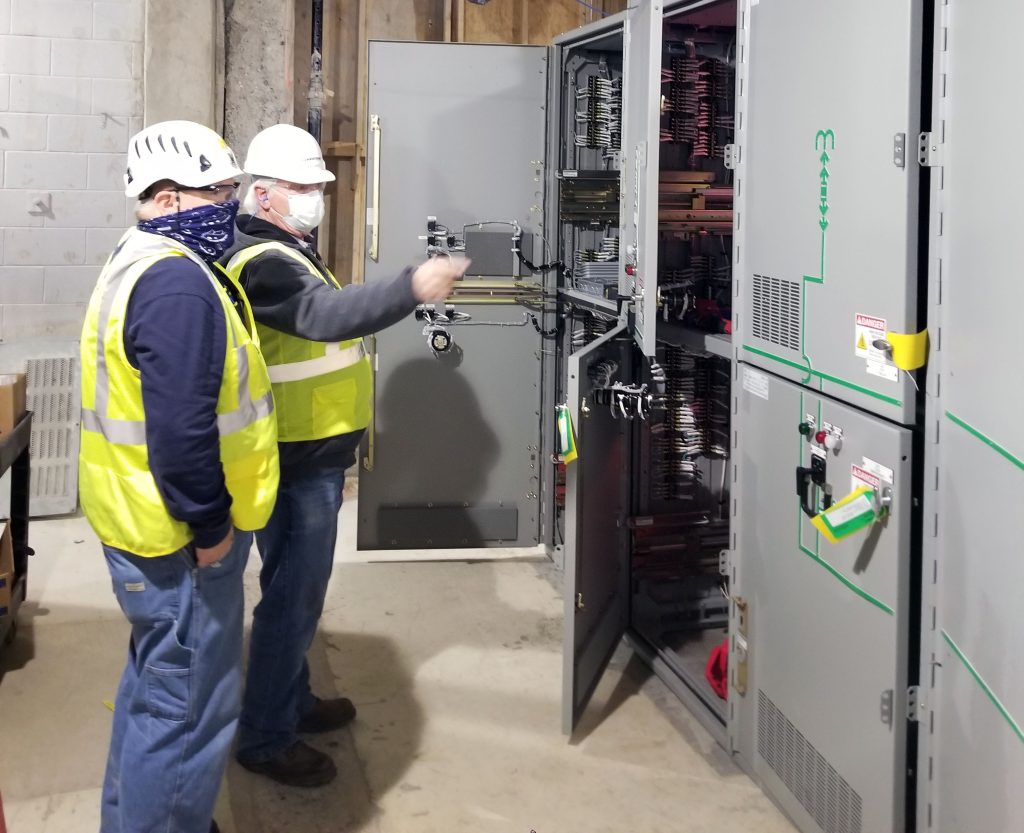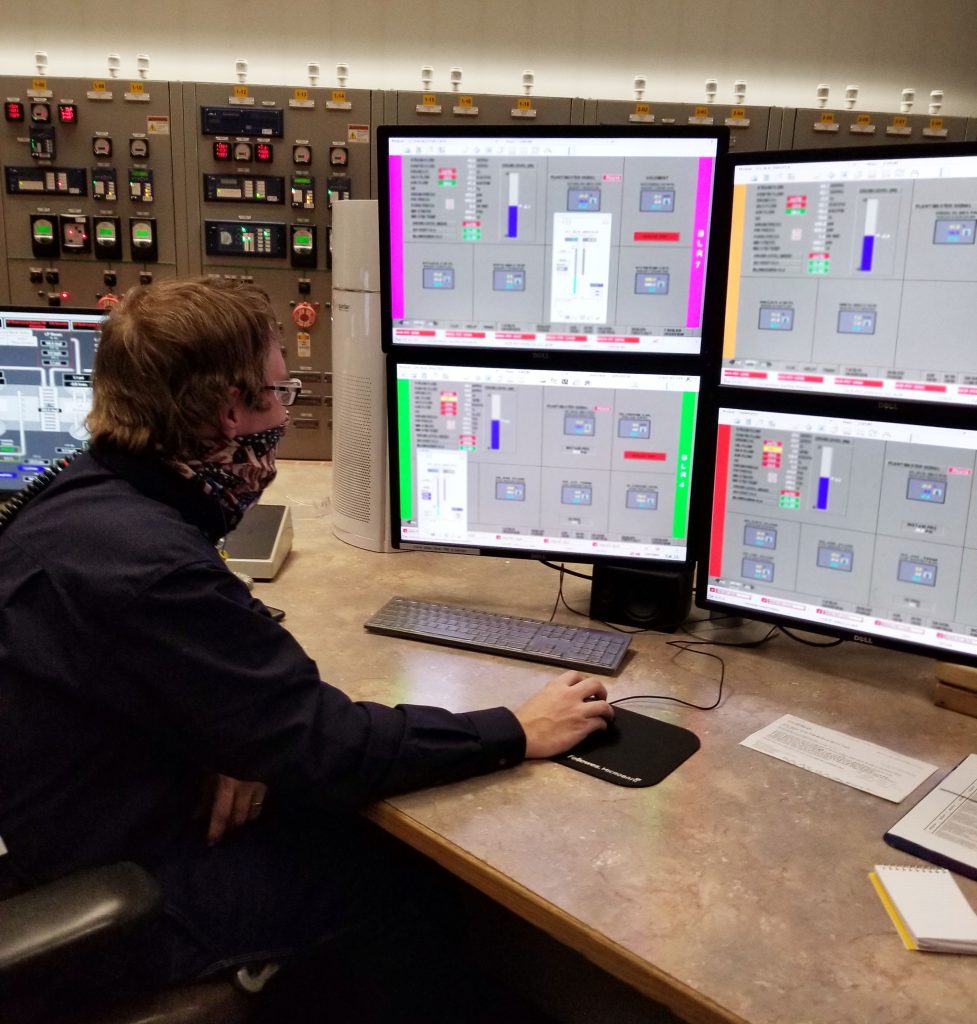On December 11, 2021, southeast Michigan experienced a severe weather event, with high winds the entire day with some gusts over 50 mph. Expecting this inclement weather to cause significant issues to the Michigan electricity grid, the operations team in the Central Power Plant did what they could to prepare the plant to ensure a continuous supply of electricity and heat to our customers.
The Central Campus electricity demand is met by a combination of power generated in the Central Power Plant and electric power purchased from DTE Energy. This electric power is supplied to campus on three main electrical circuits. These circuits, and the systems that monitor and control them, have all been replaced over the last two years as part of the 13.2kV switchgear project.

On Saturday 12/11 around 8:30 pm, two of the three DTE feeds simultaneously went offline. Before the switchgear upgrade, this type of event would have caused a significant electrical outage to the Central Campus. But during this event, the plant generators switched from DTE feeds to power from the plant seamlessly.
Good fortune helped, too: at the time, the plant was producing nearly all the electricity needed for Central Campus and staff had just completed testing of generator controls the previous week.
The majority of the university did not experience any power outages. By 9:30 pm both circuits were able to reconnect the DTE power feed, again seamlessly.

This success is one example of the exceptional reliability and improved sustainability the university can expect from several projects underway. One project is bringing dedicated underground power lines from DTE’s main lines to the Central Power Plant. This will also reduce loads on the Ann Arbor area electric supply, hopefully improving its reliability as well.
Another project will allow Utilities to leave the three main circuits in the plant connected to each other, so that if one feed is lost, campus will not experience any power loss. The needed power will simply be supplied by the other DTE line connected to another circuit.
Lastly, the plant expansion, which is now online, increases its ability to generate power that is more reliable and produces fewer greenhouse gas emissions than the power imported from DTE.
Thanks to thoughtful planning, Utilities is well on its way to greater reliability and sustainability as it powers a dynamic 24/7 campus.
Written by Nathan Parker

